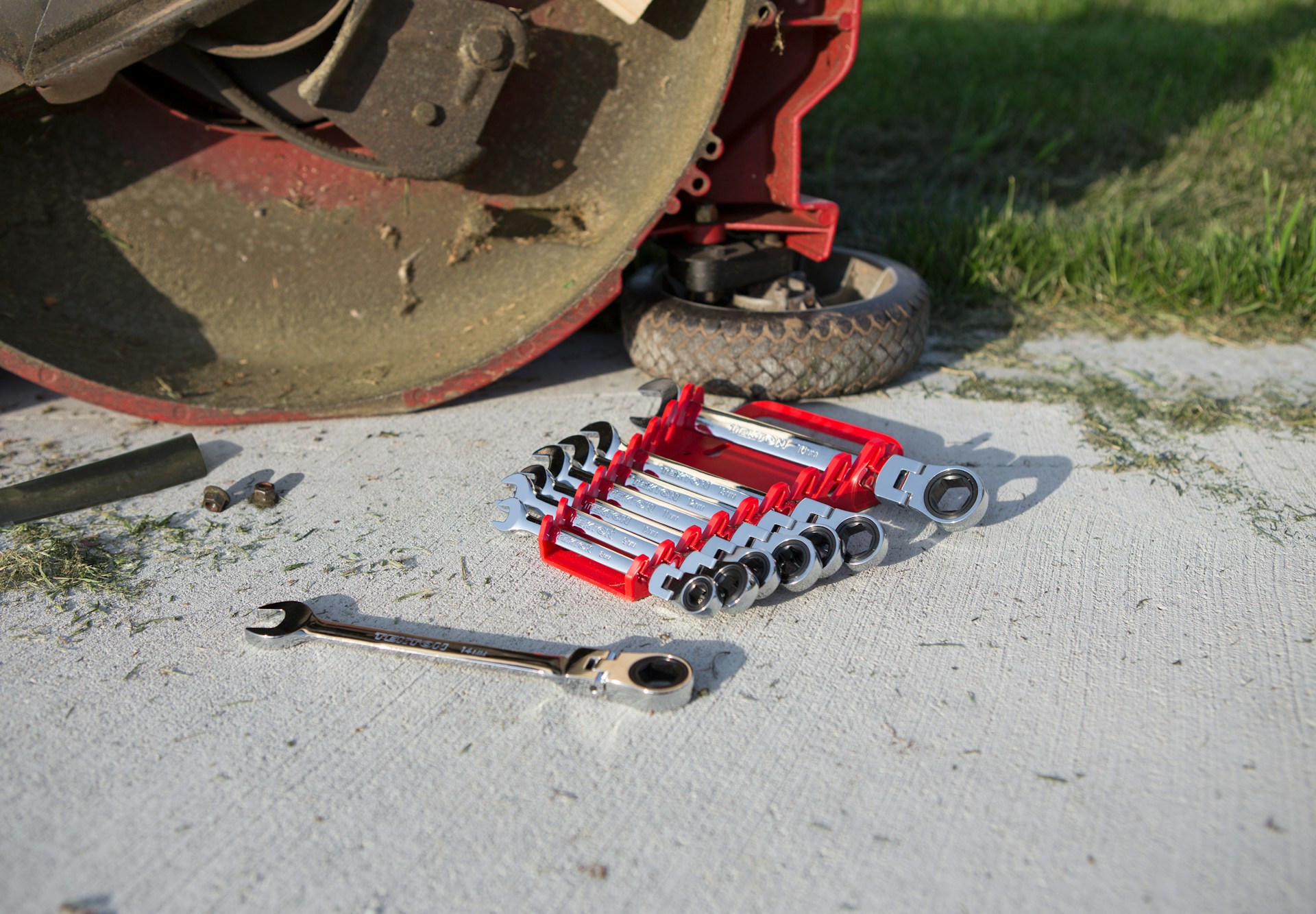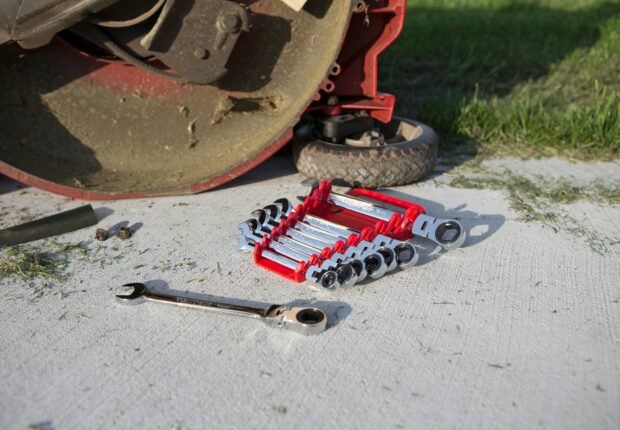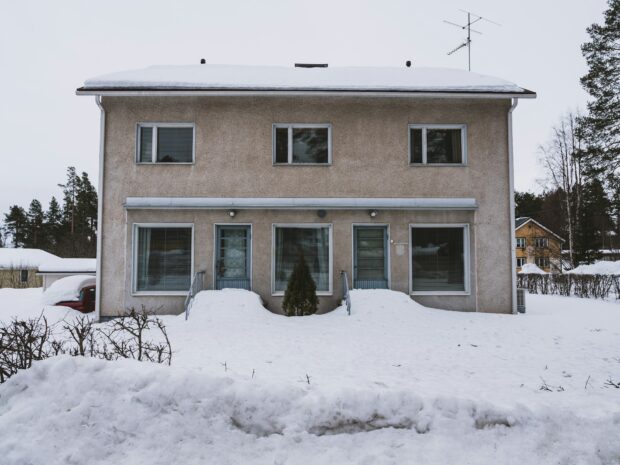
Small engines power some of our most essential outdoor equipment, from lawnmowers and chainsaws to snowmobiles and generators. When these reliable workhorses start acting up, it can bring your projects to a grinding halt.
Whether you’re dealing with a snowmobile that won’t start before your next adventure or a generator that’s losing power during peak season, understanding common engine problems can save you time, money, and frustration.
Most small engine issues stem from a handful of predictable causes. Fuel system problems, ignition failures, and mechanical wear account for the majority of performance issues you’ll encounter. The good news? Many of these problems have straightforward solutions that don’t require a trip to the small engine repair shop.
This comprehensive troubleshooting approach will help you identify and resolve the most frequent small engine problems. From diagnosing why your engine won’t start to fixing performance issues that rob your equipment of power, you’ll learn professional techniques that get your equipment running smoothly again.
Engine Won’t Start: Diagnosing the Most Common Problem
Starting problems plague small engines more than any other issue. Before you assume the worst, methodically check these common culprits.
Fuel System Issues
Stale fuel is the number one cause of starting problems. Gasoline begins to degrade after just 30 days, forming gum and varnish that clog fuel lines and carburetor jets.
Check these fuel system components:
- Fuel tank for contaminated or old gasoline
- Fuel lines for cracks, blockages, or loose connections
- Fuel filter for clogs or debris
- Carburetor bowl for water or sediment buildup
Replace any fuel older than 30 days with fresh gasoline mixed with the appropriate oil ratio for two-stroke engines. Clean or replace clogged fuel filters, and inspect fuel lines for damage.
Ignition System Problems
A weak or absent spark prevents combustion, leaving your engine silent despite your best starting efforts.
Test your ignition system by checking:
- Spark plug condition and gap settings
- Ignition coil connections and mounting
- Kill switch operation
- Flywheel key alignment
Remove the spark plug and inspect the electrode. A blackened, fouled, or damaged plug needs replacement. Clean plugs with a wire brush and check the gap according to your engine’s specifications.
Air and Compression Issues
Engines need proper airflow and compression to run efficiently. Restricted air intake or low compression can prevent starting.
Examine these components:
- Air filter for dirt, oil, or damage
- Intake manifold for loose connections
- Cylinder head bolts for proper torque
- Piston rings through compression testing
Replace dirty air filters immediately. A clogged filter forces the engine to run rich, fouling spark plugs and reducing performance.
Engine Runs Rough: Fixing Performance Issues
Rough-running engines waste fuel and deliver poor performance. These problems often develop gradually, making them easy to overlook until they become severe.
Carburetor Problems
The carburetor mixes fuel and air in precise ratios. When this mixture becomes unbalanced, your engine runs poorly.
Common carburetor issues include:
- Clogged jets from stale fuel deposits
- An incorrect float level is causing flooding or lean running
- Damaged gaskets are allowing air leaks
- Improper adjustment of mixture screws
Clean carburetor jets with compressed air and carburetor cleaner. Never use wire or drill bits, which can enlarge jet openings and alter fuel flow. Rebuild kits contain all necessary gaskets and components for a complete carburetor restoration.
Ignition Timing Problems
Incorrect ignition timing causes rough idle, backfiring, and power loss. Most small engines use fixed timing, but worn components can alter timing significantly.
Check these timing-related parts:
- Flywheel key for shearing or damage
- Ignition coil air gap settings
- Cam and crankshaft alignment
- Valve timing on four-stroke engines
A sheared flywheel key is common after hitting obstacles with mowers or other equipment. This small component maintains proper timing between the crankshaft and ignition system.
Valve Adjustments
Four-stroke engines require proper valve clearances for optimal performance. Tight valves reduce compression, while loose valves create noise and poor sealing.
Valve maintenance involves:
- Measuring clearances with feeler gauges
- Adjusting clearances to specification
- Inspecting valve faces and seats for damage
- Checking valve springs for proper tension
Consult your engine manual for specific clearance measurements and adjustment procedures. Valve adjustments typically require the engine to be at top dead center on the compression stroke.
Engine Lacks Power: Restoring Lost Performance
Power loss frustrates operators and reduces equipment effectiveness. Multiple factors can rob your engine of its full potential.
Exhaust System Restrictions
Blocked exhaust systems create back pressure that limits engine breathing and reduces power output significantly.
Inspect these exhaust components:
- Muffler internal baffles for carbon buildup
- Exhaust ports in two-stroke engines
- Catalytic screens in emission-controlled engines
- Exhaust gaskets for leaks
Remove carbon deposits with a wire brush or scraper. Two-stroke engines are particularly susceptible to exhaust port clogging, which requires careful cleaning to maintain proper port timing.
Air Filter and Intake Problems
Restricted airflow forces engines to run rich, reducing power and increasing fuel consumption.
Check your intake system for:
- Dirty or oil-soaked air filters
- Cracked intake boots or manifolds
- Loose clamps or connections
- Debris in the air box
Clean foam air filters with warm, soapy water and re-oil according to manufacturer specifications. Paper filters should be replaced when dirty—cleaning damages the filtering media.
Compression Loss
Low compression indicates internal engine wear or damage. This serious condition requires professional diagnosis in most cases.
Signs of compression problems include:
- Difficulty starting despite good fuel and spark
- Excessive blow-by from the crankcase
- Oil consumption and blue smoke
- Reduced power under load
Perform a compression test to establish baseline readings. Most small engines should produce 90-150 psi, depending on design and displacement.
Engine Overheats: Preventing Thermal Damage
Overheating destroys engines quickly and expensively. Small engines depend entirely on air cooling, making proper airflow critical for longevity.
Cooling System Maintenance
Air-cooled engines use fins and fans to dissipate heat. Any restriction to airflow causes rapid temperature increases.
Maintain your cooling system by:
- Cleaning debris from cooling fins regularly
- Checking fan operation and belt condition
- Removing grass clippings from engine shrouds
- Inspecting air intake screens for blockages
Use compressed air or a stiff brush to remove packed debris from cooling fins. Work from the inside out to avoid pushing debris deeper into the fin structure.
Oil System Problems
Proper lubrication prevents friction and carries away heat from critical engine components.
Monitor these lubrication factors:
- Oil level and condition
- Oil viscosity for temperature conditions
- Oil change intervals
- Crankcase ventilation system operation
Change oil according to manufacturer recommendations or more frequently in dusty conditions. Synthetic oils offer better high-temperature protection and longer service intervals.
Operating Conditions
External factors significantly impact engine operating temperatures and longevity.
Consider these environmental factors:
- Ambient temperature and humidity
- Altitude effects on air density
- Load conditions and duty cycle
- Ventilation around the engine compartment
Reduce loads during hot weather and ensure adequate ventilation around the engine. High altitude requires carburetor adjustments to compensate for reduced air density.
Engine Smokes Excessively: Identifying Internal Problems
Smoke color and characteristics reveal specific engine problems. Understanding these visual clues helps direct your troubleshooting efforts effectively.
Blue Smoke Issues
Blue smoke indicates oil burning in the combustion chamber, pointing to worn seals or rings.
Blue smoke causes include:
- Worn piston rings allow oil to pass through the cylinder walls
- Damaged valve guide seals in four-stroke engines
- Crankcase overfilling forces oil into the combustion area
- Damaged cylinder walls from overheating or contamination
Check oil level first—overfilling creates excessive crankcase pressure that forces oil past seals and rings. Severe blue smoke usually requires professional engine rebuild services.
White Smoke Diagnosis
White smoke typically indicates coolant or water entering the combustion chamber, though small engines rarely have liquid cooling systems.
White smoke in small engines may result from:
- Condensation in cold weather (normal and temporary)
- Water contamination in fuel from poor storage
- Head gasket failure in liquid-cooled engines
- Cracked cylinder head or block
Most white smoke in small engines comes from normal condensation during cold starts. Persistent white smoke after warm-up indicates serious internal damage.
Black Smoke Problems
Black smoke shows incomplete combustion from overly rich fuel mixtures or inadequate airflow.
Black smoke sources include:
- A clogged air filter is restricting airflow
- Carburetor problems are causing a rich mixture
- Faulty choke operation keeps the mixture rich
- Incorrect carburetor adjustments
Clean or replace air filters first, then check choke operation. Carburetor adjustment requires specific procedures and tools for proper results.
Seasonal Maintenance: Preventing Problems Before They Start
Preventive maintenance costs far less than emergency repairs and keeps your equipment ready when needed.
Pre-Season Preparation
Proper preparation ensures reliable operation throughout the working season.
Complete these pre-season tasks:
- Change engine oil and filter
- Replace the spark plug and air filter
- Inspect and clean cooling fins
- Check fuel system components
- Test starting and charging systems
A qualified lynx snowmobile dealer can provide professional pre-season service for specialized equipment, ensuring proper preparation for demanding conditions.
Storage Procedures
Proper storage prevents most off-season problems and extends equipment life significantly.
Follow these storage guidelines:
- Add fuel stabilizer to prevent fuel system problems
- Change oil to remove contaminants
- Clean exterior surfaces and cooling fins
- Store in a dry, ventilated location
- Remove the battery and maintain charge levels
Fuel stabilizers prevent gum and varnish formation that clogs carburetor jets and fuel lines. Quality stabilizers protect fuel for up to 12 months in proper storage conditions.
Regular Inspection Schedule
Consistent inspection reveals problems before they cause failures or safety hazards.
Inspect these items regularly:
- Fasteners for looseness or damage
- Cables and controls for proper operation
- Safety devices and guards
- Fluid levels and leaks
- Wear items like belts and filters
Document inspection findings and maintenance actions. This record helps identify recurring problems and supports warranty claims when necessary.
Professional Help: When to Call the Experts
Professional engine troubleshooting and small engine repair services provide expertise and specialized tools for complex problems. Recognizing when you need professional help prevents further damage and safety hazards.
Seek professional service for:
- Internal engine damage requiring disassembly
- Electrical system problems beyond basic components
- Precision adjustments requiring specialized tools
- Safety-related repairs on commercial equipment
- Warranty work on newer equipment
Benefits of professional service include:
- Access to technical service bulletins and updates
- Specialized diagnostic equipment and tools
- Genuine parts and proper repair procedures
- Warranty coverage on repairs and parts
- Safety compliance for commercial applications
Establish relationships with qualified service providers before you need emergency repairs. Research local shops, read reviews, and verify certifications and insurance coverage.
Experienced technicians can quickly diagnose complex problems that might take hours of trial-and-error troubleshooting. Their expertise often saves money through accurate diagnosis and proper repair procedures.







